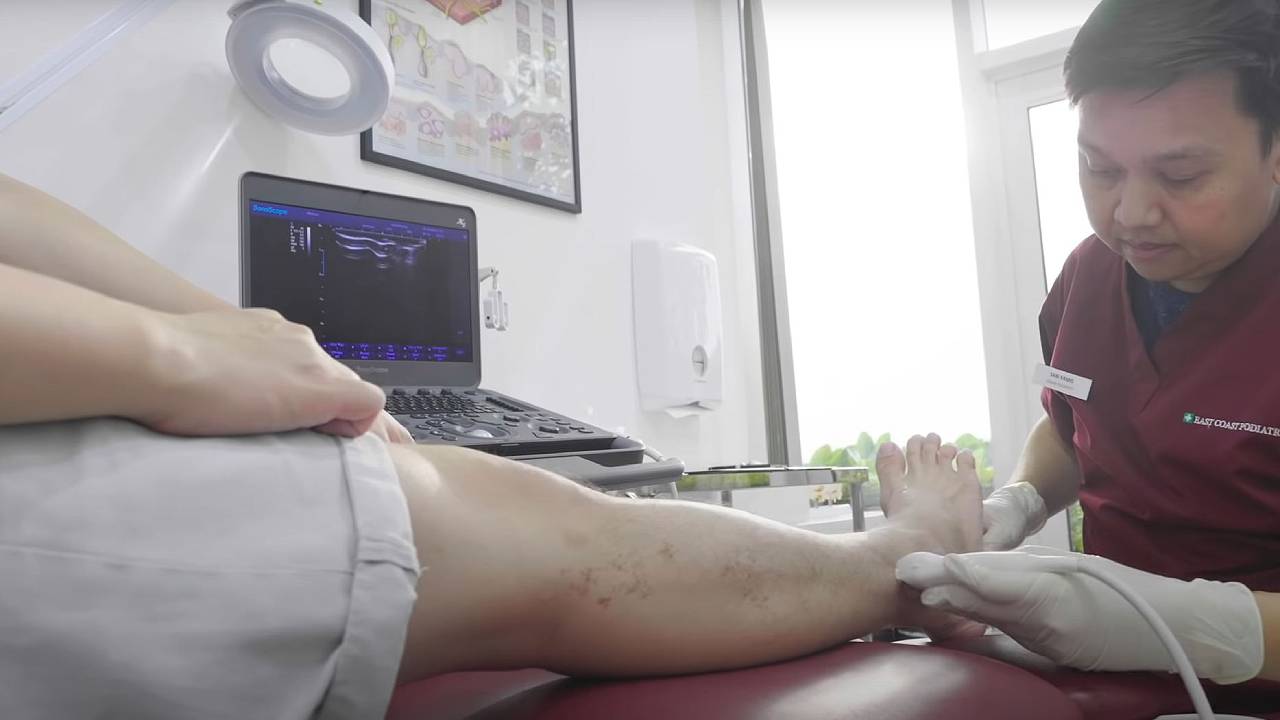Contrary to popular belief, fractures are not just complete breaks in the bone. They can also be cracks, and can occur in any bone in the body. This means that even severe fractures can sometimes go unnoticed for months without proper care.
At East Coast Podiatry, we regularly see multiple foot fracture cases that have been ignored by patients, allowing more damage to accumulate over time. Our lower limbs and feet are specifically vulnerable to stress fractures because of the repetitive forces inflicted on them during walking, activities and daily life. Depending on the nature of the activity, the foot and ankle may experience a load of up to 300% your body weight. Contrary to popular understanding, those with low levels of activity can also sustain foot fractures.
Fractures can occur in the calcaneus, cuboid, navicular or any other part of the ankle and foot. The most common site of injury are the metatarsals, with Wayne Rooney, Neymar, Lionel Messi and David Beckham just being some of the football players who have broken their metatarsal. This is mostly due to the metatarsals being inherently longer and thinner than the rest of the foot bones; excessive force on these bones can cause them to fail when you come to your toe-off phase of gait.
Lifestyle changes in recent years have also increased the risk factors for many. These can include:
- Increased osteoporosis rates due to nutrient poor diets and a rise in eating disorders such as vitamin D, vitamin B12 deficiency or anorexia
- Increased participation in high intensity interval training such as Zumba, Circuit Training, Boxing and other high intensity sports
- Hard and flat walking surfaces such as marble, cement, or asphalt
- Technological advances have created a more sedentary lifestyle, causing to a deterioration in both bone and muscle strength
- Hot and humid weather encourages patients to wear open toe, slip-on and soft footwear such as flip flops which offer no support, leading to injuries and foot deformities
- Increased use of high heels, causing a change in the biomechanical forces applied to the feet
Given these circumstances, stress fractures are becoming increasingly common, and our podiatrists commonly see foot fractures in clinic. Microtrauma that has been left unaddressed can develop into a complete stress fracture. Stress fractures are caused by overuse and repetitive activity such as basketball, circuit training, brisk walking, running, or Zumba. Left unresolved, patients can experience long-term discomfort and pain from post-traumatic osteoarthritis.
Some patients may be convinced that have the mindset that since they have been doing these activities for so many years yet never experienced any pain, then there is no problem. However, just a subtle change to your routine may result in the onset of a fracture. For example:
- Changing to a new exercise routine involving different forces or directional changes.
- Increasing intensity of workouts.
- Changing environment surfaces such as treadmill to outdoors.
- Osteoporosis weakened the bones over time.

Fractures often present as:
- Sharp immediate pain in the fracture location
- Pain can diminish with rest and recurs with activity
- Radiating pain may be present
- Throbbing pain may be present at night-time
- Tenderness, swelling, or bruising at the site of injury
- Dull aching sensation
- Foot shape changes / deformities of the foot
- Inability to move or bare weight on the foot
- Often-times, there can be no pain at all
Fracture cases often be managed without surgery, but patients must rest and immobilise their injured area ifor 4 to 8 weeks. Diagnostic tools such as ultrasound or X-rays provide detailed images of the injury to guide therapy. More severe fractures may require surgery. It is important to seek podiatry care, if unaddressed or delayed can lead to prolonged recovery and complications.
What can a podiatrist do for my fracture?
Podiatrists at East Coast Podiatry use advanced technologies to promote a swift recovery. The specific management method you receive will depend on the type of fracture you have and the results of your diagnosis. Some of the methods that may be used include:
- Offloading using soft, hard, fixed or removable casts/splints.
- Methods for bone healing (SIS / Focal ESWT).
- Weekly Review.
- Rehabilitation of muscles and gait training.
If you suspect that you have fractured your foot, ankle or lower limb, you should seek medical attention as soon as possible. All fractures must be offloaded according to the type of fracture they are. Podiatrists will typically use diagnostic ultrasound to determine if bone swelling, bone callus or bone cracks are seen, it is not uncommon for x-rays to be requested.
It should be noted, that, depending on the type of fracture sustained, (i.e. stress fracture) the fracture may not show up immediately following the injury as bone reaction or bone callus may need to form, this can take up-to 2 weeks to develop following a fracture.




